Tool Test: Benchtop Drill Presses
The best do everything a furniture maker needs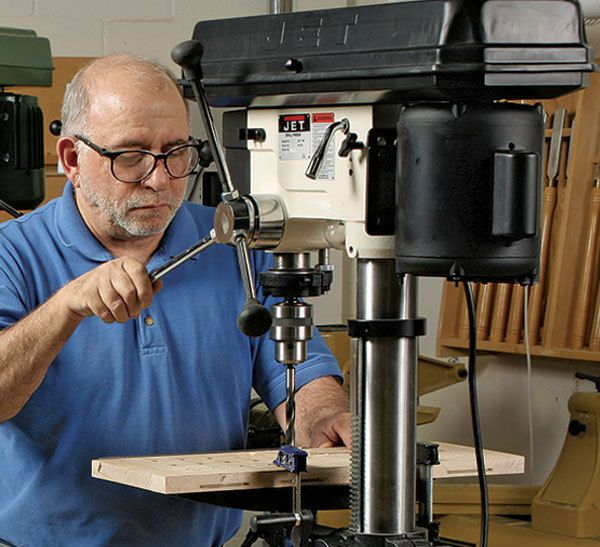
Synopsis: Do benchtop drill presses have the power and precision a furniture maker needs? This tool review looks at nine models that are at least 1/3 hp and can drill at least 3 in. deep, checking them for flat and level tables, runout, power, and ease of use. Ultimately, three models stood out.
Drill presses tested include: Craftsman 21914, Delta DP350, General International 75-100, Grizzly G7943, Grizzly G0485, Jet JDP-15M, Robi DP121L, Shop Fox W1668, Shop Fox M1102.
Correction: In this PDF, we inadvertently put the Best Value logo on the wrong Grizzly drill press (there were two in the test). The winner, as indicated elsewhere in the article, was the Grizzly G7943.
It’s a good bet that most woodshops have at least one cordless drill, and possibly a corded model as well. Between them, they can take care of most drilling jobs. But these handheld drills have a weak link: the hand that holds them. Humans are inconsistent. We don’t always drill straight and true, or on the mark. That’s why so many of us are willing to spend hundreds of dollars on a drill press. Properly set up, a drill press gives you clean, straight holes, right where you want them, at whatever angle you choose, time after time. It also has more power than a handheld drill, and it won’t wrench your wrist with a big bit.
In our last drill-press review (FWW #162), we tested floorstanding models. But a lot of woodworkers opt for benchtop models. They take up less floor space and, on average, cost less than floorstanders. The question is: Do they have the power and precision a furniture maker needs?
For this review, we looked at nine medium- to large-size models, based on power and plunge depth. Each has at least 1⁄3 hp and can drill at least 3 in. deep. All but one cost less than most floor-standers. The results told us two encouraging things about benchtop drill presses: You do get what you pay for; but you don’t have to pay a lot to get what you need.
One thing you should know about all benchtop drill presses: Like most of the floor-standing models, they’re designed for metalworking, with small tables that are hard to clamp onto. So you’ll have to buy or make a larger auxiliary table that can support large workpieces and accept a fence easily.
All drill accurate holes, but power varies widely
In order to get the consistently straight, perfectly placed holes necessary for making furniture, the important parts of the machine must line up. All of the models come with tables preset at zero (90° to the spindle) for left-to-right tilt, that can be adjusted by loosening a bolt beneath the table. None needed adjusting.
Front-to-back tilt is another matter, since there is no adjustment for this on any of these drill presses. Five of the models were off-level, front to back. Although none was off by more than half a degree, even that slight deviance gives you another reason to attach an auxiliary table, which you can shim level.
From Fine Woodworking #192
Fine Woodworking Recommended Products

Starrett 12-in. combination square

Shop Fox W1826
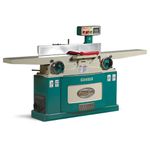
Grizzly G0495X Industrial Helical Cutterhead 8-in. Jointer
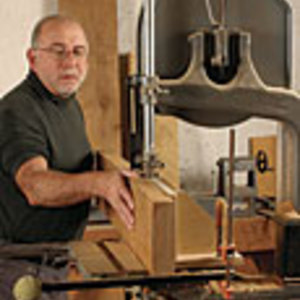



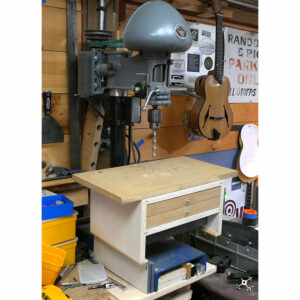
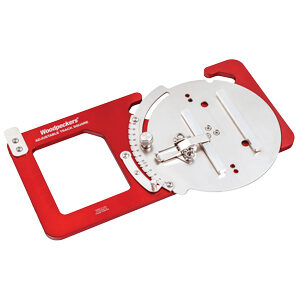
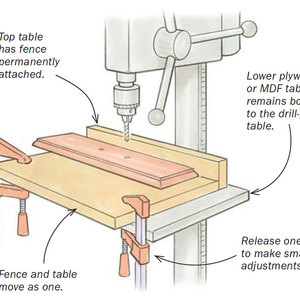
















Log in or create an account to post a comment.
Sign up Log in